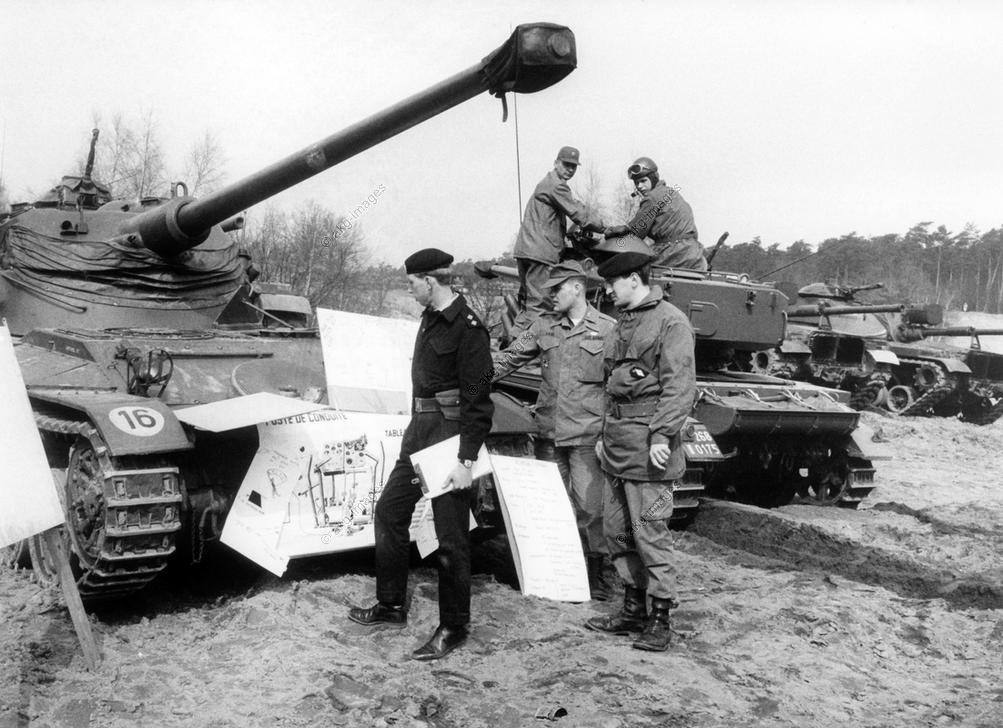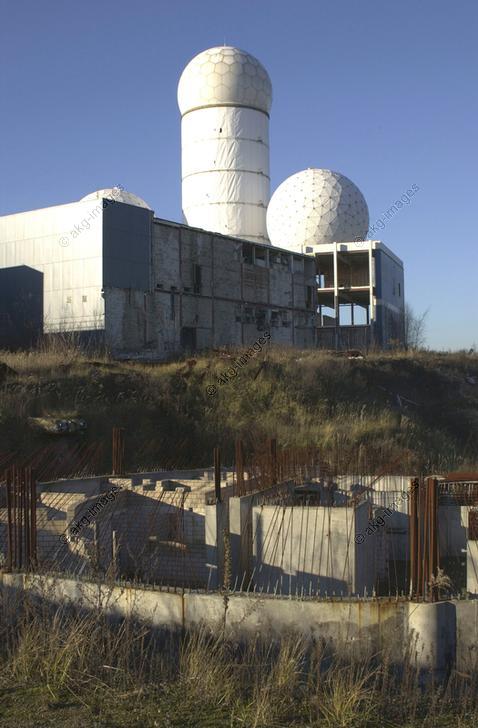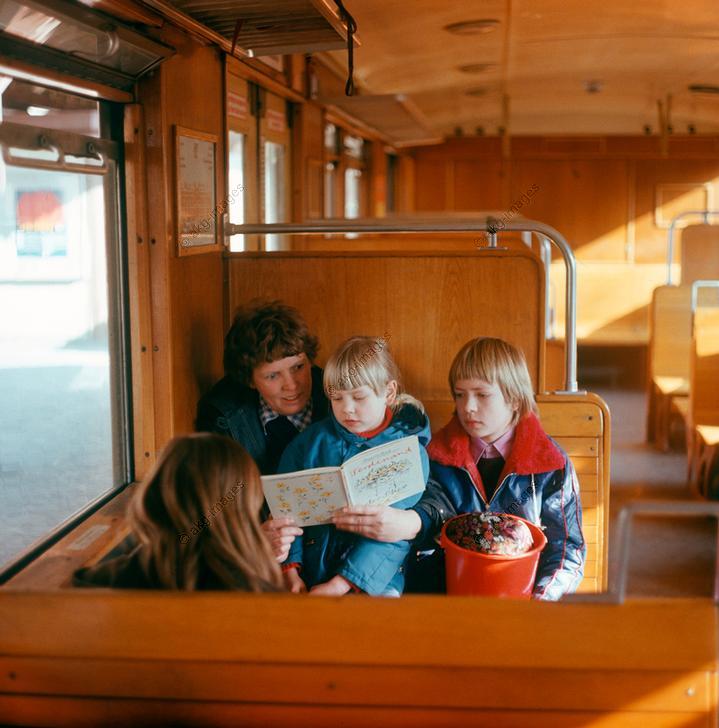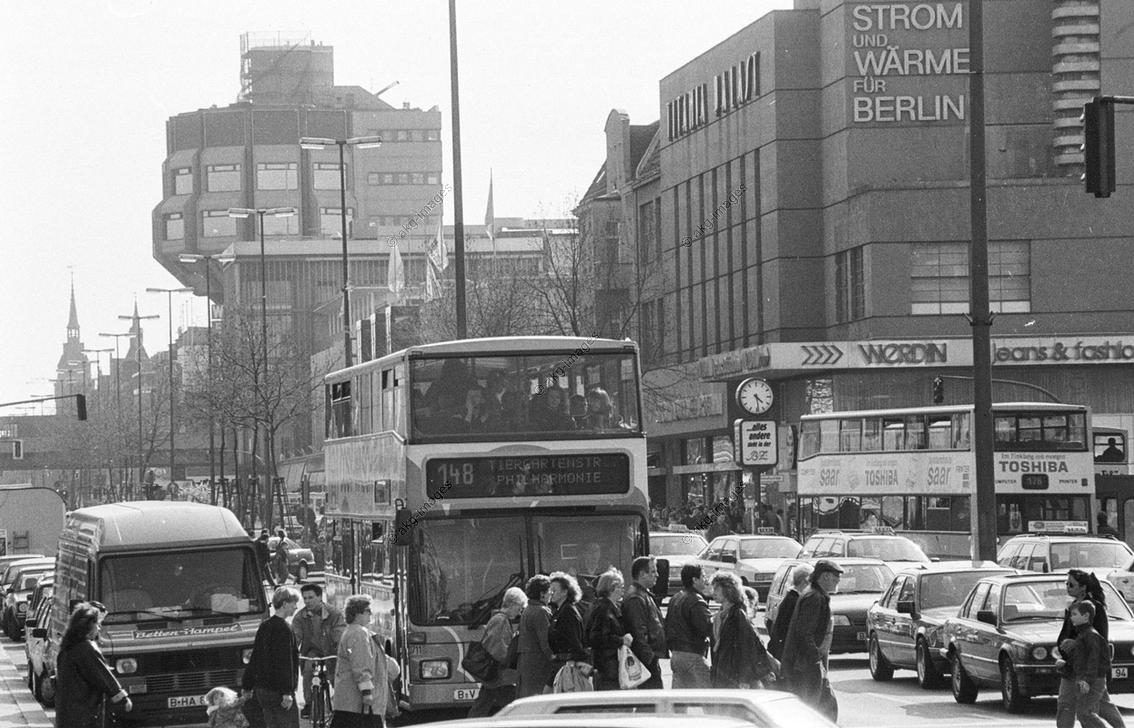Surrounded by the Wall: Memories of a childhood in West Berlin (Part I)

Click here to read part two of Volkmar’s post about growing up in West Berlin.
You can also see a selection of images on the akg-images website hand-picked by Volkmar from our archive to give a sense of what West Berlin was like in the years before reunification.
Let’s get one thing out of the way: No, I do not want the Berlin Wall back. Its existence simply coincided with a particular period in my life that in hindsight seems more appealing than it actually was. My childhood was not particularly exciting and my experiences were not extraordinary, but childhood is, for everyone, a special time, and that includes everything that existed within it and came out of it.
The Wall belonged to that childhood, even if I understood that it was a symbol of injustice, something that shut us out and shut us in. So, if it should sound like I want to have the Wall back, it’s not the Wall I want back but instead various things from my childhood as well as that feeling that life was simply better back then, because the only threat we faced was the total atomic destruction of humanity.
Perhaps it’s that childlike ignorance that made this carefree attitude possible, an attitude that slowly disappeared along with the Wall itself, which fell when I was 14 years old. We didn’t realise at the time that we were living through a piece of history that would later fill books, as the only thing that mattered was the everyday, not the Wall. And the everyday in a walled city was hardly different from anywhere else. You went to work, drove a car, took the bus or the underground, went on excursions, went shopping, went to the cinema, opera, theatre or, like me, to school. I was born in 1975 and the Wall belonged to the everyday along with postboxes and telephone boxes. It was clear to everyone that the Wall would outlast all of us because nothing survives longer than ill will.

And for my own part I can say no, I did not feel barricaded in, (West) Berlin was 481 square kilometres in size and had just under 2 million residents, you didn’t run into the Wall at every corner. Excursions to the Grunewald forest in the south or to the Tegel forest in the north were completely possible, and we’d see Allied forces there training with tanks and the like. Once we ran right through the middle of a group of Americans wearing camouflage and holding weapons, with jeeps and tanks all over the place, and no one said anything as we raced through their drill, nothing was fenced off, the forest belonged to us as much as to them. And as a tin of crackers and candy fell from the tank in front of us, I was overjoyed, because it was unopened. Of course we took it, as well as countless shells left over after the training session had ended.
The Americans belonged there, too, and organised an open day every year at Tempelhof airport. British and French forces also took part, and that’s why there’s a photo of me in a British military helicopter holding a certificate which was surely meant as a joke. There are photos on American trucks and tanks, spotlessly clean, the tyres gleaming, children somersaulting around cannons. You could see planes and transporters, too, the C-130 Hercules particularly impressive, four engines, which each started one of its motors until 16 propellers were running, deafening us, and the planes would fly a few times around the airport, whilst we enjoyed real American burgers. Once we even got to ride in a tank on an exercise area at the airport, although, as tanks have no windows, all I remember was the rumbling and the shuddering and the extreme warmth, and I was happy to get back in one piece.
I also remember the long walk from the entrance to the airport until you finally reached the airfield. Later on, they had tents where they would perform baggage checks, this was possibly after the Berlin discotheque bombing in 1986, as no one realised at the time that Libya was behind that.

The Listening Station on the Teufelsberg hill could be seen from far and wide. We knew it was listening to the East. There was a similar station in Marienfelde. Perhaps it was my age and because I didn’t have my own camera, or perhaps it was because no one photographs the things they expect to last forever, and perhaps because no one believed that it would all soon be a piece of history, but many photos remained untaken, and only with the benefit of hindsight, or because I was 15, did the station start to interest me more and more, but by then the watchtowers were unguarded, the Wall filled with holes, the Listening Station emptied out (but still very interesting) and shortly after everything was gone. And only recently I learned that in Marienfelde, on the hill on which only the debris scattered across the ground betrays that something was once there, an American solder photographed or took state secrets and gave them to the GDR, all a few kilometres from our front door. In 1991 the Americans dragged him off the street into a car and sentenced him as a spy to 38 years in prison in the USA. He had however lived in the GDR and was a naturalised citizen, he would have automatically become a citizen of the unified Germany after reunification, but this was a tricky situation in which the Federal Republic did not want to get involved, and it was made known that he was not in fact a German citizen, despite his identity card, so no one paid any attention.
That and so much else remained unphotographed. Perhaps people had gotten used to it or knew no different. And as long as the continued existence of the Wall and everything that came with the division of Berlin was not at the least in question, no one paid any attention.
The Wall always felt like it was on the outskirts of the city, anyway, where you would hardly choose to spend time, as nothing ever happened there. Marienfelde, Lichtenrade, Lichterfelde-Süd, Heiligensee, mostly there was an abandoned S-Bahn train line there, overgrown, its rusted rails ending at the Wall.
The Wall which ran through the middle of Berlin and not around West Berlin was also on the outskirts from my point of view, because behind it was the other Berlin, but on our side there was mostly still the typical West Berlin dereliction: old buildings, dead ends with turning circles for buses and – what one would hardly imagine possible today – almost rural tranquility. Some wasteland, junk cars, in West Berlin the Kurfürstendamm and Schloßstraße were bustling with activity, but not at the Reichstag, Brandenburg Gate and the western end of the Friedrichstrasse. Certainly there remained traces bearing witness to the fact that in Berlin there must have once been a lot more going on: huge railway facilities, which fell into disrepair and were overgrown, and disused railway stations.

The disused railway stations of the North-South S-Bahn belonged to a different time. The light was weak, here and there a border guard, the train running at reduced speed but without stopping in the stations that were in tunnels, for example Nordbahnhof and Potsdamer Platz. The actual stop was in Friedrichstraße, then still tiled in orange. From there you could travel to the Berlin that was the capital of East Germany, and out from there slowly to the remaining stations within East Berlin. You could look out the window and find a border official performing his boring work somewhere in the darkness.
Overground, tram tracks here and there in the road are reminders of the tram that ended at the Wall, a much more vivid Berlin. But that was a different time. And somehow also a different city. The Berlin of the 1980s had nothing to do with it. Was it really as quiet as I remember? In many places which today are full of life, this is certainly true. This is especially true for the part of the Wall behind which lay East Berlin. To call it a wilderness would be flattering, for example, in Potsdamer Platz or in what was left of it. And in the southwest there was even farming, now and then we would drive out to watch the harvest coming in. Otherwise we knew this area only from our holidays. And, of course, on most streets that ended at the Wall, there was not much going on. The people lived in peace and quiet in the suburbs. 20 years later there would be four-lane roads on their doorstep that look like an Autobahn as soon as you reach the outskirts of the city. Slowly this sea of traffic grew, with trucks coming from the industrial estates in the countryside, people driving to work in Berlin or leaving Berlin on occasion. In the 1980s, my father took me by moped along the two-lane road in Lichtenrade, and I don’t remember us seeing another car. At the end was a crossing for refuse trucks, a thick white line on the road, on the left and on the right the Wall. There were certainly several signs on both sides of the border and a number of times we drove in a big curve crossing the thick white line and spending spending several meters in the GDR, the checkpoint was further along. Perhaps someone in the GDR noted this provocative act but actually everything seemed as quiet and calm as in the West.

I remember well that my mother would always go “into the city” to shop, which actually meant the Schloßstraße in Steglitz with its shops and department stores. As my mother was a born-and-bred Berliner, I always found this expression rather strange, and wondered how you can be in Berlin and yet drive “into the city” but she was not the only one who used this expression. In October 1989, late-night opening on Thursdays was introduced, where stores were open until 8:30 in the evening and did not have to close at 6:30 as usual, and on Saturdays could stay open until 2.30 in the afternoon.
To be continued…